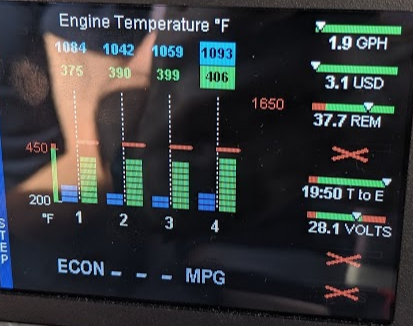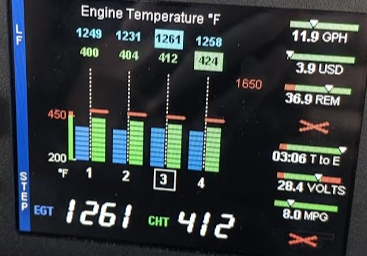RocktheWings
Filing Flight Plan
- Joined
- Apr 17, 2019
- Messages
- 29
- Display Name
Display name:
RocktheWings
Flew a new plane yesterday and noticed the CHTs (particularly the #4 cylinder) was quite high on takeoff, tipping 425 and climbing (other cylinders about 405-410). I reduced power and monitored everything and was able to manage it all and keep it around 390-410 most of the time doing some pretty benign maneuvers. EGTs all seemed normal too and kept it full rich for additional cooling.
The plane is a C172R with 160hp, and I’ve heard that Cessnas don’t have great cooling, but for that kind of power output the CHTs seem excessive. I typically fly 180hp S models and the CHTs stay around 355, and on long extended climbs maybe hitting 385, so this seemed fairly abnormal.
Admittedly I don’t know the complete story on the plane as it might have a rebuilt engine in it and is going through its breakin phase, need to check on that. My basic knowledge has always been 380-400 caution zone, 400 and above do something.
What are your thoughts? How concerned should I be?
The plane is a C172R with 160hp, and I’ve heard that Cessnas don’t have great cooling, but for that kind of power output the CHTs seem excessive. I typically fly 180hp S models and the CHTs stay around 355, and on long extended climbs maybe hitting 385, so this seemed fairly abnormal.
Admittedly I don’t know the complete story on the plane as it might have a rebuilt engine in it and is going through its breakin phase, need to check on that. My basic knowledge has always been 380-400 caution zone, 400 and above do something.
What are your thoughts? How concerned should I be?


